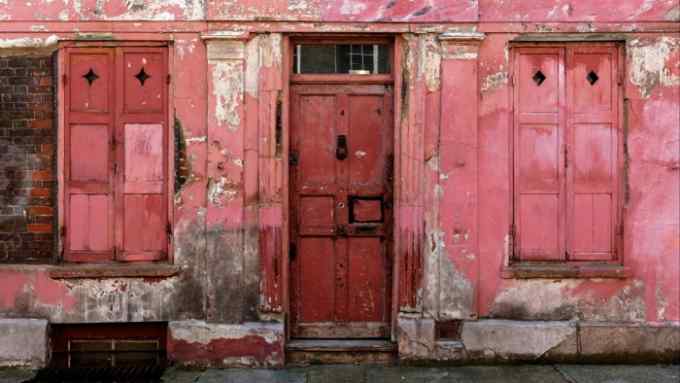PAD celebrates 15 years of opening London’s eyes to design

Roula Khalaf, Editor of the FT, selects her favourite stories in this weekly newsletter.
The London edition of the PAD art and design fair, which celebrates its 15th anniversary this month, reflects the evolution of a growing global appetite for contemporary collectible design and functional art. It is a market that has risen in response to a proliferation of design museums — from Tokyo to Barcelona, Canberra to Dundee — as well as dedicated design publications, auctions and yet more fairs.
Driving this activity is a rich creativity which is blurring the boundaries between art, craft and design. So porous are these distinctions that contemporary art galleries increasingly present functional objects, while artists, architects and designers move blithely between materials and disciplines. There is hardly a major international contemporary art fair in the world that has not expanded to embrace design.

For Patrick Perrin, PAD’s co-founder, collectible design has come of age. “This is a market reaching maturity,” he says from his office in Paris.
The idea of a London edition — the fair first launched in Paris in 1996 — emerged out of conversations with friends Löic Le Gaillard and Julien Lombrail, who had launched the Carpenters Workshop Gallery in Chelsea in 2006. “London was buzzing. It was the beginning of Frieze and the arrival of the power contemporary art galleries,” says Le Gaillard. “We thought we could present a French way of looking at collectible design. There was David Gill in London but no one else. A fair was needed to put collectible design on the market.” Such a fair had to be during Frieze Week.


The duo were more focused on sculptural form than function, as were collectors turned dealers Valerio Capo and Sam Pratt of Gallery Fumi. “For us,” says Capo, “the gallery is all about the tactility of materials, the human element, unusual materials and old techniques bought back to life.” The gallery is showing work commissioned for its 15th anniversary show at PAD. Most are unique pieces, from Lukas Wegwerth’s Crystallization 183, confected from ceramic and salt crystals, to Rowan Mersh’s hand-dipped paint on birch Marmaros Metamorphosis II and an organic bronze volumetric chair by Voukenas Petrides.
Another gallerist to enter the fray was Sarah Myerscough, known for concept-led but handcrafted sculptural pieces in wood and other natural materials. “Collectible contemporary design was such a new form of visual expression when I started,” she says. “It was exciting to be at the inception of an emerging market.”


For design historian Libby Sellers, it was a moment of the conflation of market interest, demand and supply. “I think the growing sophistication of the consumer played a large part. Suddenly everybody seemed interested in contemporary design.” Driving the market was London’s success as a financial capital, and the number of rich people taking properties here to capitalise on tax benefits.
“It was also a heady time in the city’s art schools,” says Sellers. “Ron Arad, head of product design at the Royal College of Art, was encouraging a curious, concept-led design strategy which played with the idea of one-off pieces, and the people he taught went on to be tutors or mentors to the next generation.” London was leading as a creative centre, with Central Saint Martins, Kingston and the RCA art schools, she adds, although Eindhoven in the Netherlands was also making its name. The usual trajectory for young designers is to start by making one-off pieces in their studios; some decided to stay with that, preferring the immediacy and satisfaction of working directly with galleries and clients to the long process of mass production.
The cyclical nature of art markets and museum shows continues to inform what the next generation produces. “Twenty years ago, you could not move for yet another installation of Prouvé or Perriand,” says Sellers. “Then came a big focus on the Memphis Group — Ettore Sottsass, bright colours and Italian radical design. Now we are moving quickly — too quickly, I think — through a revisit of the post-punk era of welded, found, slightly aggressive furniture.”
What comes next? “A return to minimalism but softened — clean, natural materials in a very reduced aesthetic.”

What has changed over the past 15 years is the scale, complexity and conceptual ambition of the work produced. “Making processes have become so incredibly diverse and innovative,” says Myerscough, “and the science of making with recycled materials is again extraordinary.” An emphasis on sustainability in materials and techniques has evolved into design projects which extend far beyond the studio and involve and empower local communities. New exhibitors Æquõ, the first gallery from India to show at PAD London, for instance, bring French women designers Valériane Lazard, Florence Louisy and Wendy Andreu, who honour the country’s ancient craft traditions through collaborations with local artisans.
The globalism of this community of designers and makers is striking. Those exhibited at PAD London’s 62 galleries represent more than 30 countries. Despite that, Le Gaillard is surprised that there are still so few design galleries in London. Perrin puts the number worldwide at no more than 100-120, a fraction of those showing contemporary art. “Design does have one advantage,” he smiles. “It is much less expensive.”
October 10-15, padesignart.com

Comments